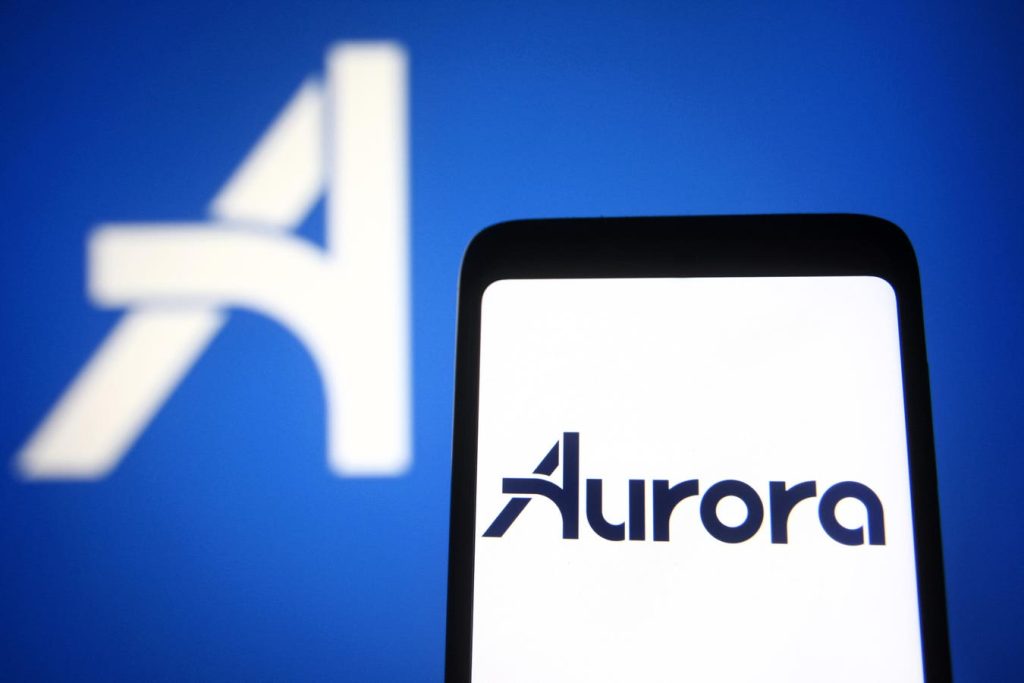Aurora Innovation’s Surge: A Leap Forward in Autonomous Trucking
Aurora Innovation, a key player in the self-driving vehicle technology arena, experienced a significant surge in its stock price following a groundbreaking partnership with Nvidia and Continental. This collaboration aims to propel the mass production of driverless trucks, marking a pivotal moment in the autonomous vehicle industry. The agreement centers around integrating Nvidia’s DRIVE Thor system-on-a-chip (SoC) and DriveOS into Aurora’s autonomous driving system, the Aurora Driver. Continental, a leading automotive supplier, is slated to commence mass production of this integrated system in 2027. This partnership not only validates Aurora’s technological prowess but also underscores the growing momentum of the self-driving vehicle market. The convergence of expertise from these three industry giants—Aurora’s autonomous driving software, Nvidia’s advanced computing platform, and Continental’s manufacturing capabilities—creates a powerful synergy that positions them as frontrunners in the race to commercialize autonomous trucking.
The timing of this announcement aligns with a surge in demand for self-driving technologies. Companies like Waymo, Google’s self-driving car project, have already demonstrated the viability of autonomous ride-hailing services, reporting substantial weekly paid rides. Aurora’s existing partnerships with Volvo and PACCAR, focused on developing and commercializing autonomous trucks, further solidify its strong foothold in the autonomous trucking sector. The adaptability of Aurora’s system, allowing integration into various vehicle platforms, reinforces its potential for widespread adoption. The prospect of mass-produced autonomous trucks offers a compelling solution to pressing industry challenges, including driver shortages and the need for increased freight efficiency. Aurora stands to significantly benefit from these industry trends, leveraging its technological edge to capitalize on the growing market demand for autonomous trucking solutions.
Aurora’s competitive advantage stems from the unique blend of expertise brought together by its co-founders. Chris Urmson, former CTO of Google’s self-driving project (Waymo), Sterling Anderson, who led Tesla’s Autopilot program, and Drew Bagnell, formerly in charge of autonomy and perception at Uber, represent a formidable leadership team with a proven track record in the field. This combined experience from three of the most prominent companies in the autonomous vehicle space positions Aurora as a serious contender. Their collective knowledge and insights provide a strong foundation for Aurora’s technological advancements and strategic direction, further reinforcing the company’s potential for success in the competitive landscape of autonomous driving.
Despite the promising prospects, Aurora remains in a developmental stage, with its self-driving technology undergoing rigorous testing and refinement. The company’s current revenue stream is primarily derived from collaborations with various partners. Aurora’s future revenue model anticipates a fee-per-mile structure based on the utilization of its autonomous driving technology. However, the company has incurred significant operating losses in recent years, highlighting the substantial investment required for research, development, and testing in this cutting-edge field. Investing in Aurora represents a bet on the long-term potential of autonomous driving and the company’s ability to successfully navigate the challenges associated with bringing this nascent technology to market. This investment carries inherent risks, given the uncertainties surrounding the technology’s timeline for widespread adoption and the competitive dynamics of the market.
Aurora’s stock performance has demonstrated both significant growth and volatility. While its recent surge has outpaced broader market indices, its historical performance reveals a pattern of fluctuating returns. This volatility underscores the inherent risks associated with investing in emerging technologies, where market sentiment and technological breakthroughs can significantly impact stock prices. Comparing Aurora’s performance to more established companies or broader market indices provides context for assessing its potential risks and rewards. It is essential for investors to carefully evaluate the company’s financial performance, technological advancements, and competitive landscape before making investment decisions.
Analyzing Aurora’s performance alongside its competitors, including industry giants like Google, offers valuable insights for investors. Comparative analysis of key metrics, such as revenue growth, technological milestones, and market share, provides a more comprehensive understanding of Aurora’s position within the competitive landscape. By examining the relative strengths and weaknesses of different players in the autonomous driving space, investors can make more informed decisions about their investment strategies. This comparative analysis can help identify potential investment opportunities and manage the risks associated with investing in a rapidly evolving and highly competitive industry.










